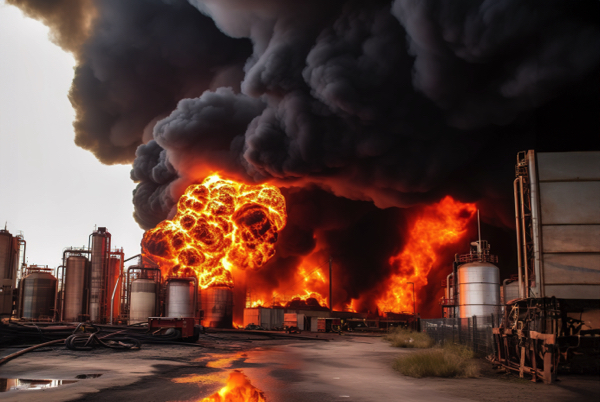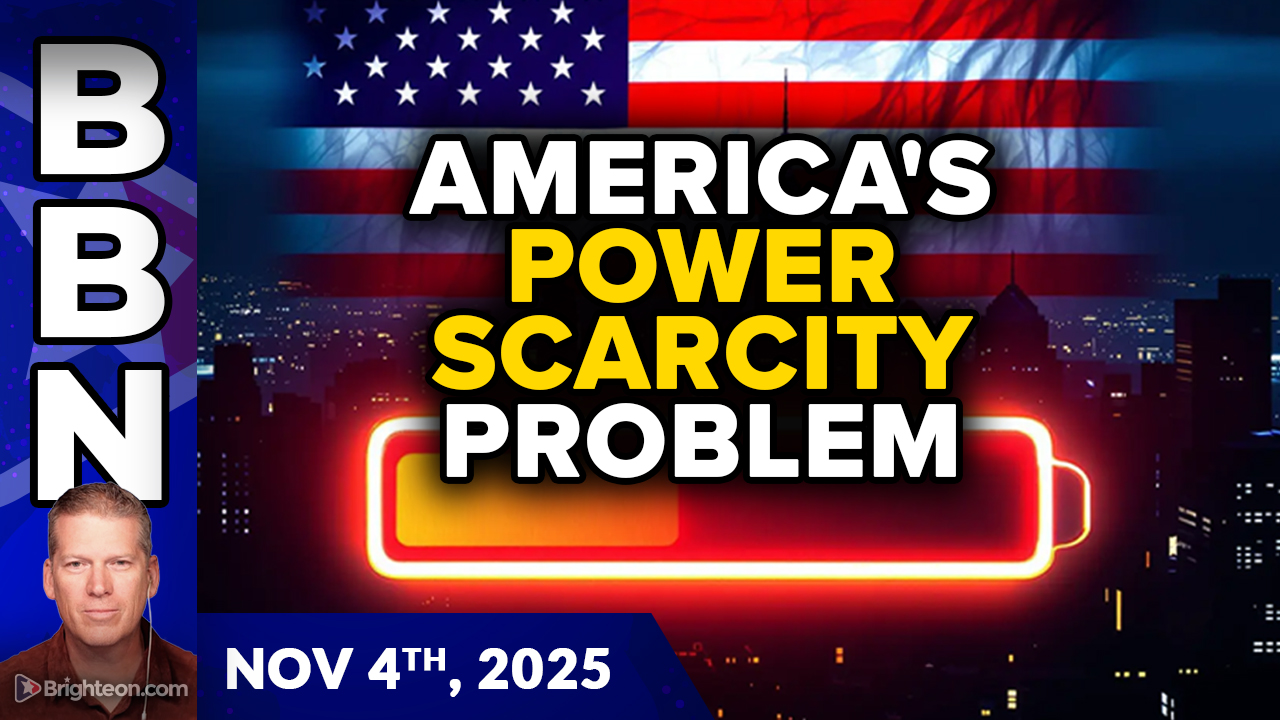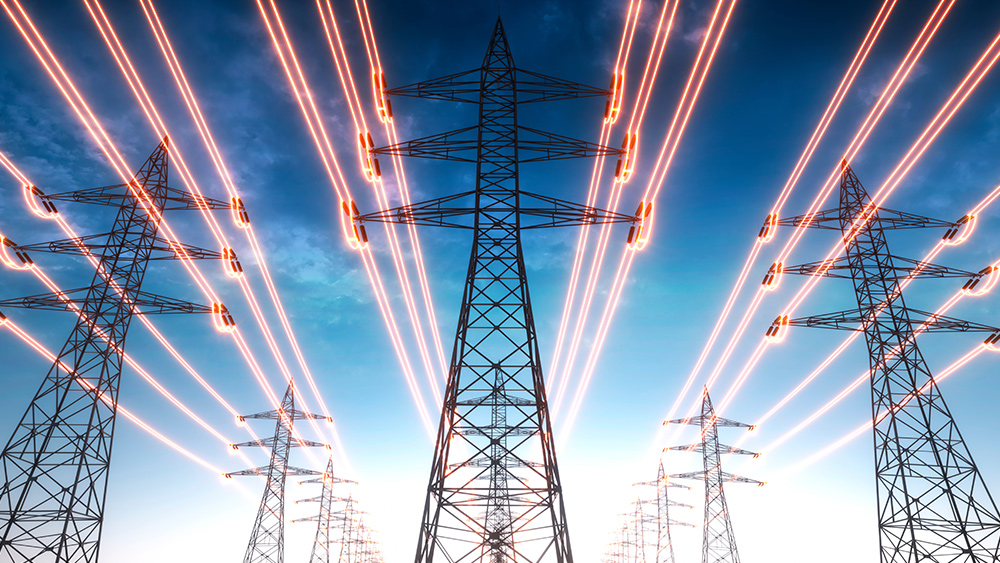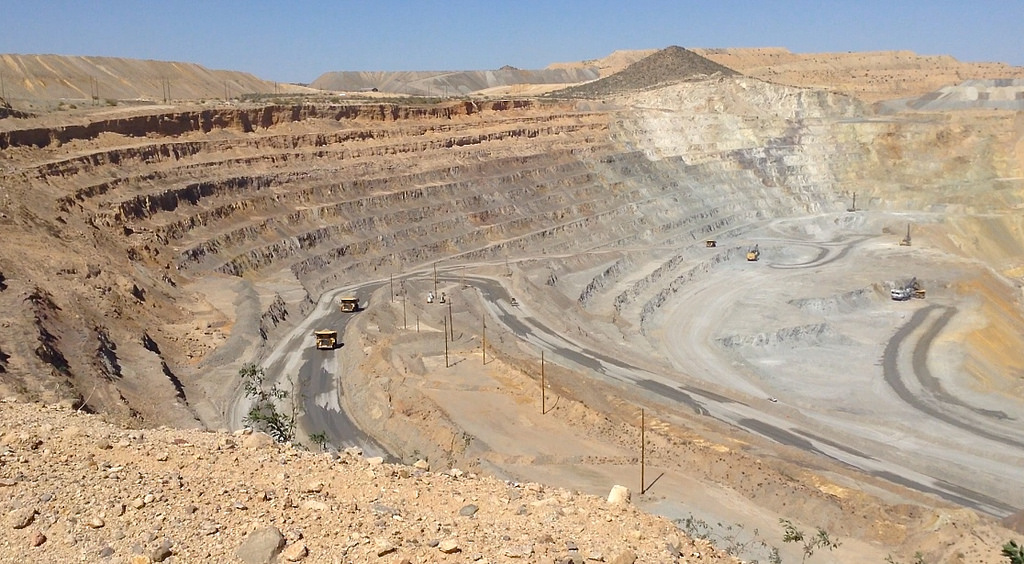Trump’s $80 billion nuclear push for AI: A high-stakes gamble or recipe for disaster?
11/12/2025 / By Kevin Hughes

- The Trump administration plans to fund 10 new Westinghouse AP1000 reactors (1,100 MW each) by 2030, backed by hundreds of billions in taxpayer loans via the Department of Energy‘s Loan Programs Office. The goal is to meet exploding energy demands from AI data centers, which require 36+ gigawatts of new power by 2028.
- Westinghouse has a history of bankruptcy (2017) and massive cost overruns (e.g., Plant Vogtle in Georgia). Skeptics doubt the AP1000 can be built on time or budget, risking financial collapse and stranded assets.
- AI data centers compete with civilians for electricity and water, often in drought-prone regions. Critics warn of energy rationing, blackouts and soaring costs, aligning with globalist depopulation agendas (e.g., Bill Gates’ energy austerity).
- Rushed construction risks catastrophic failures—potentially multiple Fukushima-level meltdowns. Decommissioning a single plant takes 30 years; failures could render regions uninhabitable. Meanwhile, China builds 29 reactors with state-backed efficiency, leaving the U.S. vulnerable.
- If the nuclear rollout fails, taxpayers foot the bill, AI growth collapses and blackouts could force compliance with energy restrictions.
The Trump administration has unveiled an ambitious plan to inject hundreds of billions in taxpayer-backed loans into nuclear power expansion, aiming to fuel the exploding energy demands of artificial intelligence (AI) data centers.
But critics warn that this nuclear renaissance—spearheaded by Westinghouse, a company with a history of massive cost overruns and bankruptcy—could set the stage for financial ruin, energy grid instability and even catastrophic failure.
According to BrightU.AI‘s Enoch, Westinghouse is a company renowned for several significant contributions to the fields of electricity, engineering and manufacturing. In recent years, Westinghouse has faced financial difficulties and has undergone significant restructuring.
The nuclear power gamble
In a high-stakes move, President Donald Trump announced a partnership with Westinghouse—owned by Canadian firms Cameco and Brookfield Asset Management—to build 10 new AP1000 nuclear reactors by 2030, each generating 1,100 megawatts. The plan hinges on $80 billion in initial investment, with the Department of Energy‘s Loan Programs Office (LPO) poised to match private funding four-to-one—potentially funneling hundreds of billions in taxpayer-backed loans into the effort.
Secretary of Energy Chris Wright emphasized the urgency at the American Nuclear Society conference: “By far the biggest use of those dollars will be for nuclear power plants—to get those first plants built… When we leave office three years and three months from now, I want to see hopefully dozens of nuclear plants under construction.”
But Westinghouse’s track record raises red flags. The company went bankrupt in 2017 after cost overruns at Plant Vogtle in Georgia and a canceled South Carolina project—both plagued by delays and billions in budget blowouts. Despite assurances from CEO Dan Sumner that the AP1000 design will meet Trump’s targets, skeptics argue that AI-driven energy demand won’t wait for nuclear’s notoriously slow rollout.
AI’s insatiable power hunger
Financial services company Morgan Stanley estimates that the U.S. needs 36 gigawatts of new power by 2028 just to sustain AI data centers—equivalent to adding several nuclear plants’ worth of capacity in just four years. With hyperscalers like Google, Amazon and Microsoft already scrambling to secure energy, the government’s nuclear push is framed as a lifeline.
Yet, AI data centers are being built faster than reactors can come online, creating a dangerous imbalance.
The Biden administration’s climate policies have already strained the grid, prioritizing unreliable renewables over baseload power. Now, Trump’s nuclear push—while addressing AI’s demands—risks repeating Westinghouse’s failures, leaving taxpayers on the hook.
The hidden agenda: Cooling the herd?
Beyond financial risks, some analysts see a darker motive: AI’s competition with humans for resources. Data centers consume staggering amounts of electricity and water, often in drought-prone regions. As AI infrastructure expands, ordinary citizens face rationing, blackouts and soaring energy costs.
This aligns with broader depopulation agendas, where globalists like Bill Gates push energy austerity while monopolizing power for AI-driven control grids. If nuclear projects falter, rolling blackouts could force compliance with energy restrictions—accelerating the Great Reset’s “you’ll own nothing” vision.
A Fukushima-scale risk?
Worst-case scenarios loom. If rushed construction leads to cut corners, the U.S. could face multiple Fukushima-level meltdowns—especially given the AP1000’s untested scalability. Decommissioning a single plant takes 30 years; failures could render regions uninhabitable.
Meanwhile, China races ahead with 29 reactors under construction, leveraging state control to avoid Westinghouse-style fiascos. If America’s nuclear revival stumbles, AI’s energy crisis could collapse the tech bubble overnight—leaving taxpayers holding the bag.
A reckoning ahead
Trump’s nuclear gamble is a double-edged sword: a potential energy solution for AI’s voracious appetite—or a fiscal and safety time bomb. With Westinghouse’s history of failure, hundreds of billions in taxpayer-backed loans could vanish into mismanagement, while AI’s unchecked growth destabilizes the grid.
One thing is certain: The battle for power—both electrical and political—has only just begun. If the nuclear rollout fails, the fallout won’t just be financial—it could be existential.
Stay vigilant. The energy wars are here.
Watch the video below about the new nuclear power plant coming to Georgia.
This video is from the Health Ranger Report channel on Brighteon.com.
Sources include:
Submit a correction >>
Tagged Under:
AI, Amazon, AP1000 nuclear reactors, artificial intelligence, big government, Big Tech, China, Chris Wright, Dangerous, data centers, Department of Energy, Donald Trump, electricity, energy crisis, energy grid, energy supply, Fukushima, future tech, glitch, Google, meltdowns, Microsoft, Morgan Stanley, new energy report, nuclear, power grid, tech giants, Trump, Trump administration, Westinghouse
This article may contain statements that reflect the opinion of the author
RECENT NEWS & ARTICLES
NewEnergyReport.com is a fact-based public education website published by New Energy Report Features, LLC.
All content copyright © 2018 by New Energy Report Features, LLC.
Contact Us with Tips or Corrections
All trademarks, registered trademarks and servicemarks mentioned on this site are the property of their respective owners.




















